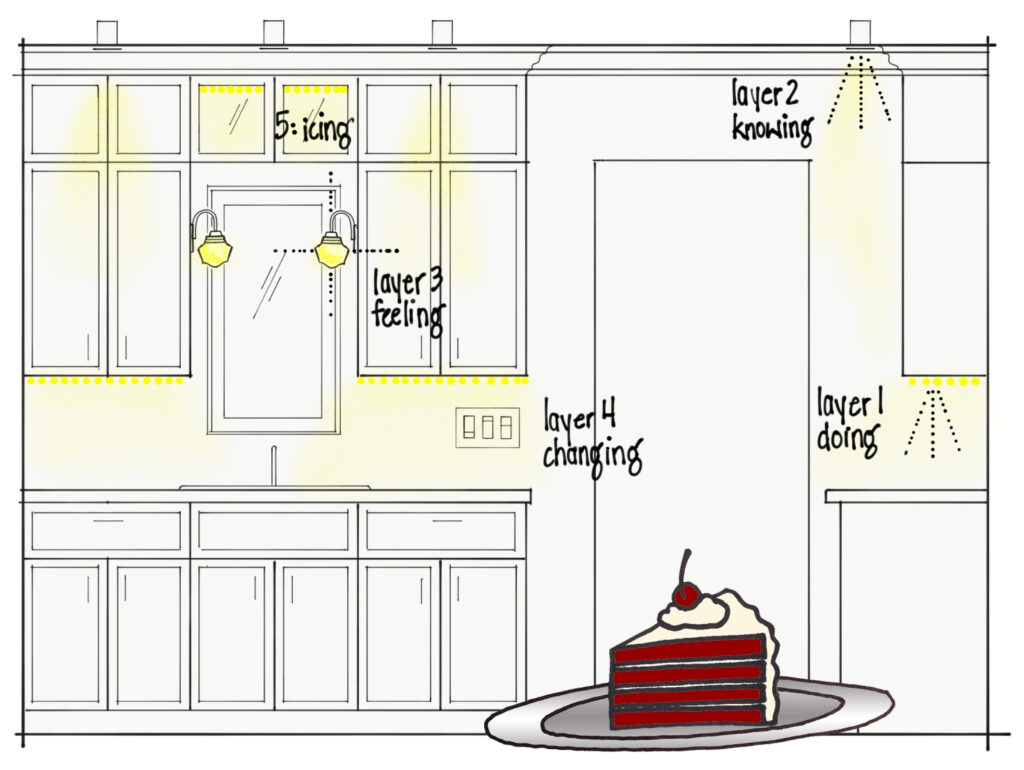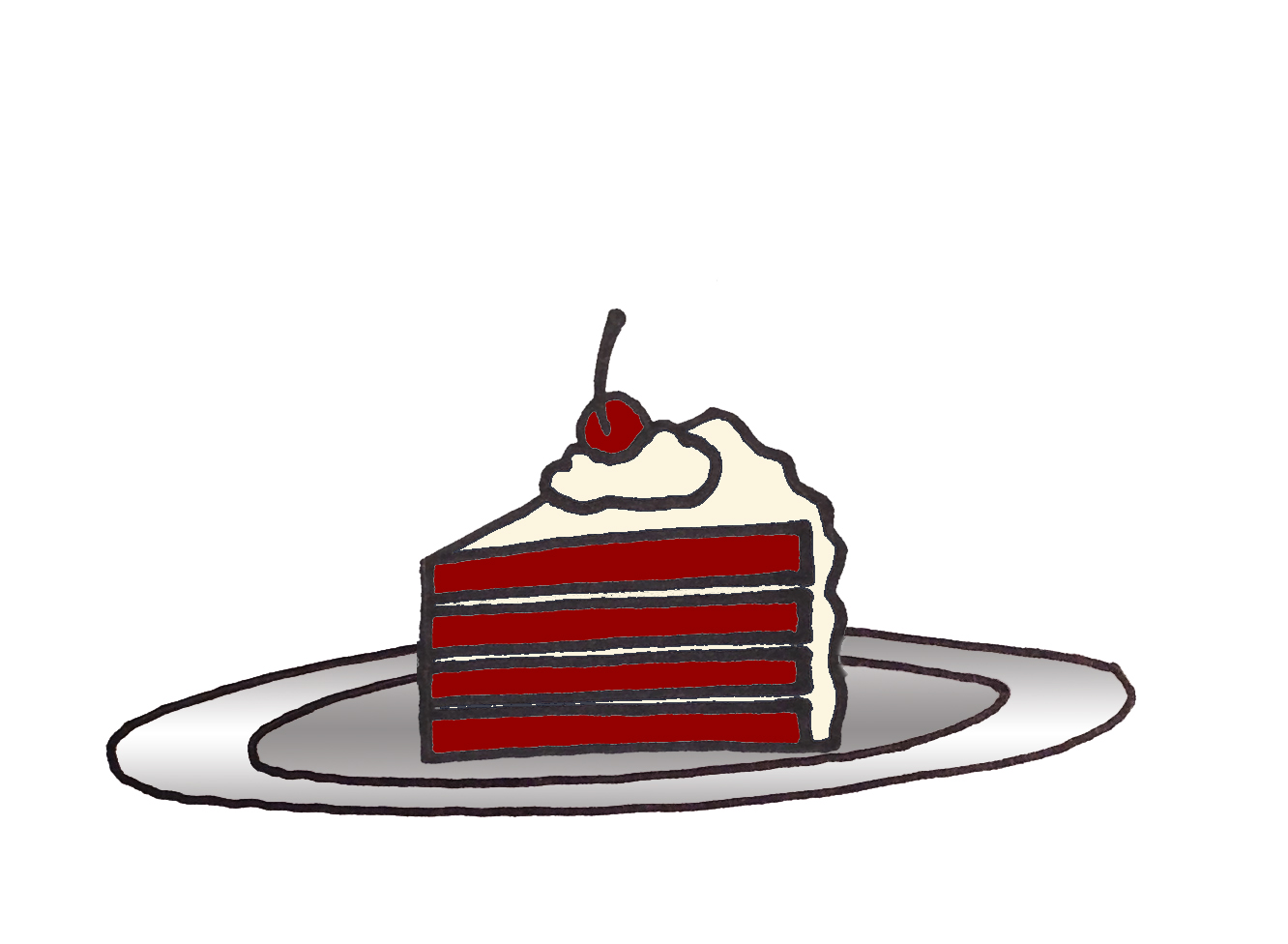I can talk about lighting theory and ideas for hours (just ask my former students), but all my lighting knowledge can be encapsulated in a single piece of delicious Red Velvet Cake. If you read just one post on this blog, or remember just one idea, I hope this will be the one.
Red Velvet Cake, at my house, is served up in four layers of moist cake separated with delicious icing. I don’t want pancake-like, flat, single-layered cake. It throws the icing-to-cake ratio off, and that is not acceptable. Lighting is the same way- we need multiple layers of light, balanced, tied together with icing of storytelling.
Coincidentally (or perhaps because Red Velvet is on my brain), I recommend four layers of light in homes, one for each layer of Red Velvet. You can read about the four layers in the first language post and soon in more detail. For now, here they are again:
- Layer One: Light for Doing
- Layer Two: Light for Knowing
- Layer Three: Light for Feeling
- Layer Four: Light for Changing
What about the icing? That’s important too, and I call it Light that tells your Story. You could also call it “aesthetics” or “style.” Does the lighting support your vision for your life, your style and tastes, and reflect your values? That’s icing.

Red Velvet Cake has a lot of ingredients, and can be made in a lot of different ways (so can lighting). As a designer, I use ingredients that can have pretty funny names like Color Rendering Index, Color Temperature, Luminance Ratios, Task Plan Geometry, L70 ratings, Spectral Power Distribution, and on. The end result is just cake.
Throughout forthcoming blog posts I’ll look at lighting a variety of different spaces using a new language of light, but Red Velvet Cake will never be far from my mind. The next time you’re looking at lighting, I hope you’ll remember it, too.
